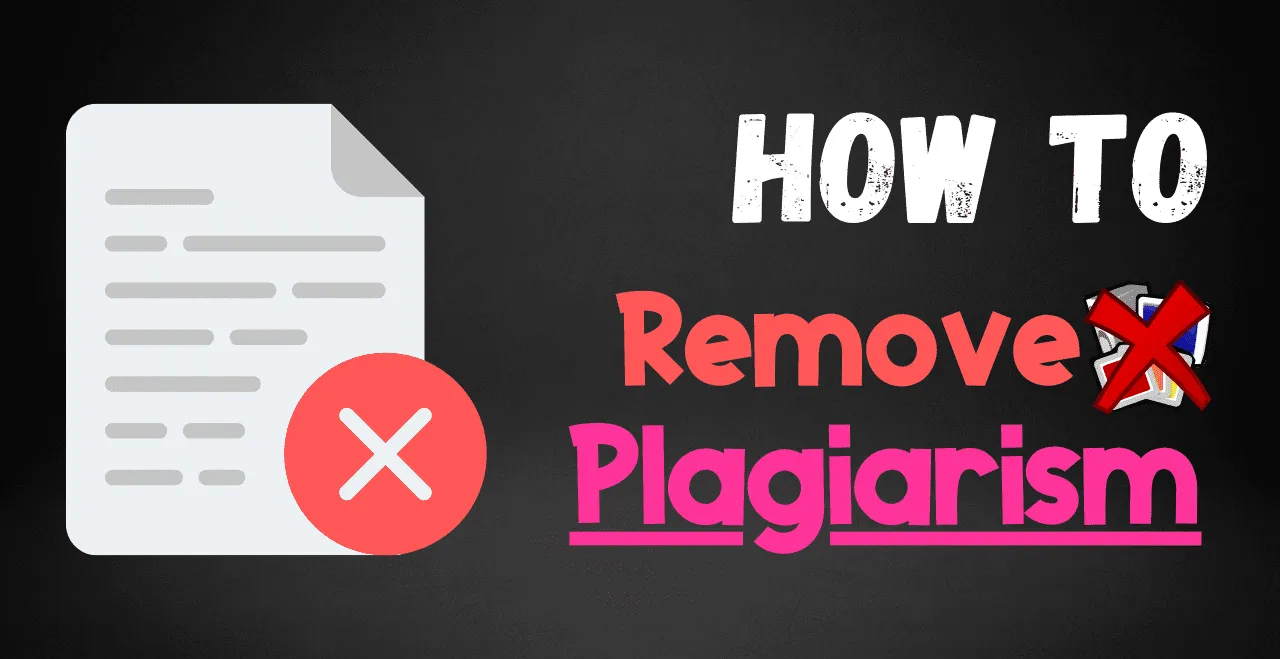Remove Plagiarism In this age of modern technology and the internet, you can do anything that you want with just a single pop. Third-party sources can legitimize your work, whether you’re interviewing a subject matter expert or presenting key results from a report. It is difficult to come up with all of the information you want to present in your paper. There are a lot of rules to follow along with it. It is not as simple as obtaining knowledge from a source and putting it into your work. Plagiarism is a serious crime that may result in the rejection of your paper. While there are many things that writers can do to audit their work and avoid/remove plagiarism or copyright when it occurs. it would be preferable, in an ideal world, to prevent this misuse of content from occurring in the first place. Here’s why preventing plagiarism is so vital, as well as how to avoid it in your writing. First, we’ll look into how plagiarism is defined.
What is Plagiarism?
According to Merriam-Webster: “To steal and pass off (another’s words) as one’s own: use (another’s writing) without crediting the source,”. This definition includes the term “steal” because it refers to situations in which another person’s thoughts or words are purposefully used without crediting the source. The concept of “owning” words arranged in a specific sequence may appear unusual in some cultures.
Why is it important to avoid plagiarism?
When you understand the significance of avoiding plagiarism, you will be more likely to put safeguards in place to keep you out of problems. As a writer, avoiding plagiarism is critical since it endangers your authenticity. Apart from losing the confidence of your mentors and peers, you may also lose crucial professional references and potential career progression. Plagiarism can be classified into numerous categories, ranging from directly duplicating someone else’s work to reusing your own writing for a different task.
How to Avoid or Remove Plagiarism?
Here are some of the greatest techniques for avoiding plagiarism.
1. Cite Correctly
Always tell your audience of ideas or words that are not your own to avoid or remove plagiarism. Cite the source in the content as it will help the users to get detailed information from Always give the source credit if you’re unsure whether you used too much of the original source information in your paraphrasing. There are various methods for citing information. To minimize plagiarism, it is usually better to request specific recommendations. Make sure you understand the standards for the document you’re working on and that you apply them correctly. Even though you are attempting to do the right thing, you may make a mistake.
2. Use quotations
When directly citing someone, another approach to give credit is to use quotation marks. If you directly utilize the words of a publication in your work. one of the most fundamental strategies to avoid or remove plagiarisms is to wrap the content with quotation marks to show that the words belong to you. You shouldn’t use several direct citations in a paper or report, but a few can help you include other people’s perspectives and ideas without plagiarizing.
3. Paraphrase the content
There is a technique to avoid using someone else’s work while giving credit where credit is due. Paraphrasing is the act of rewriting a source’s ideas or facts into your own words without changing their meaning. If done correctly, paraphrasing can be a smart approach to avoid plagiarism. When you want to reword the article without losing its original sense, you can use an online paraphraser. Online paraphrasing tools change the entire structure of an article without changing its original meaning.
4. Write your own content.
Do not attempt to use all of the information you find in your sources on your own. Analyze what you have to say about it instead of simply duplicating the source’s ideas or sentences. Coming up with something new to say on a topic is one of the finest methods to avoid plagiarism. This can only be accomplished by conducting a lengthy investigation until all of the material comes together.
5. Proofread
Before uploading the content, proofread the article thoroughly and search for mistakes in it. Possibly you have made some grammatical mistakes in the article that reduces the readability of the content. Remove those errors from the article and make it error-free. The other thing you should remove is duplication. For it, there is plenty of excellent plagiarism remover tool available online. Users can get help from an online plagiarism remover checker to make the text unique. This premium remover tool will tell you whether sections of your writing are plagiarized or not. These online tools underline the problematic words or sentences and explain where the text came from. Such recommendations can help you avoid plagiarism in your work and are well worth the effort. You can remove those highlighted parts from the content and makes remover plagiarism unique for the readers.
Final words on Remove Plagiarism
Avoiding plagiarism as a writer is crucial otherwise, it endangers your credibility. Plagiarism is categorized into several types, ranging from directly copying someone else’s work to reusing your own writing for another purpose. There are numerous methods for writers to audit their work and avoid plagiarism. Make certain that you understand and accurately apply the standards for the paper you’re working on. The tips discussed in this article can help writers remove plagiarism in the content and make it unique.

